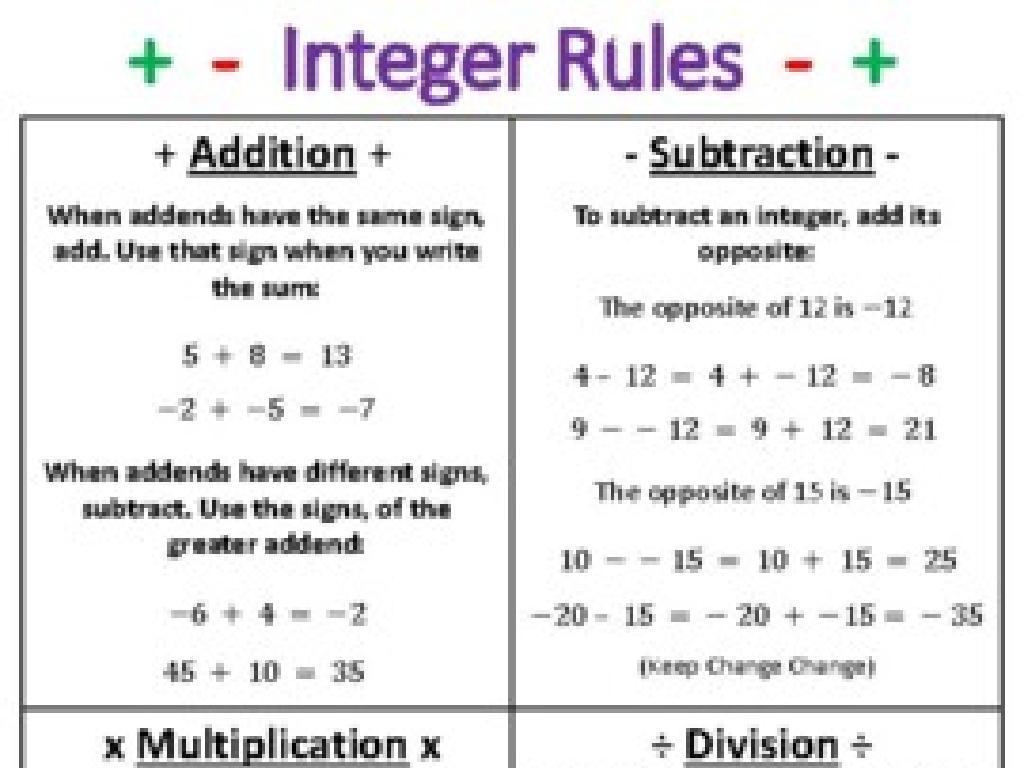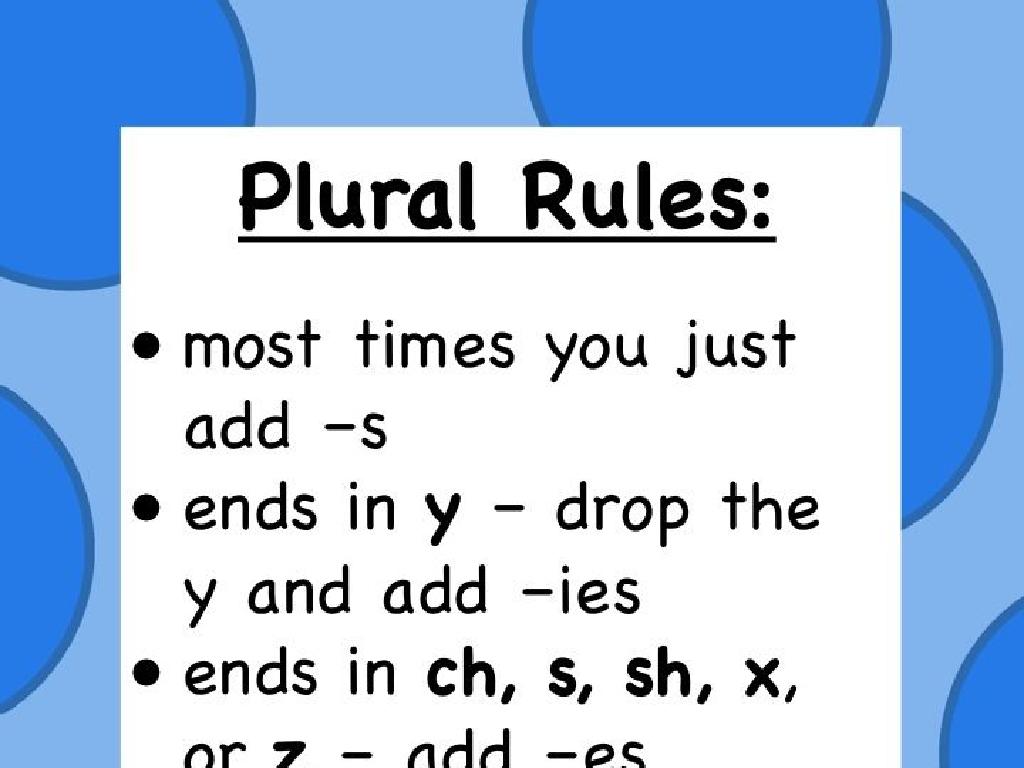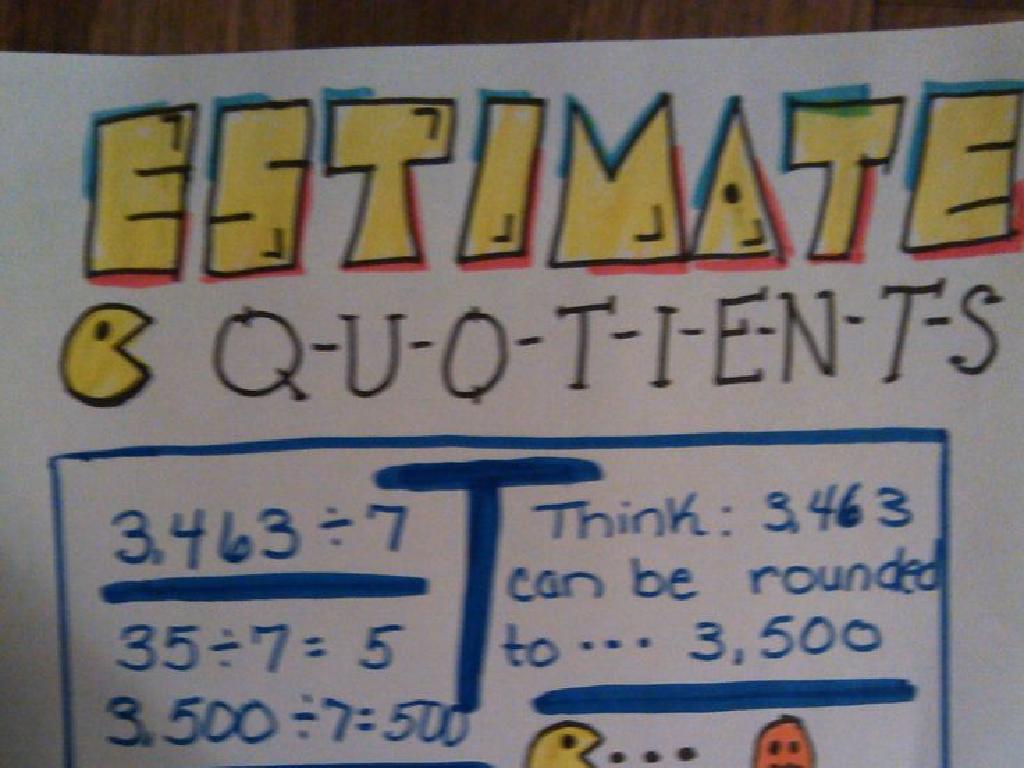Purchases - Do You Have Enough Money - Up To $10
Subject: Math
Grade: Third grade
Topic: Money
Please LOG IN to download the presentation. Access is available to registered users only.
View More Content
Introduction to Money: Understanding its Value
– What is money?
– Money is used to buy things we need or want.
– Types of money: coins and bills
– Pennies, nickels, dimes, quarters, and dollar bills.
– Using money in daily life
– Paying for food, clothes, and toys.
– Practice making purchases
– Let’s pretend to buy items under $10.
|
This slide introduces students to the concept of money, its various forms, and its everyday uses. Start by explaining that money is a tool we use to exchange for goods and services. Show different types of money, such as coins (pennies, nickels, dimes, quarters) and bills, and discuss their values. Discuss how money is used to purchase everyday items like food, clothing, and toys. Engage students with a practical activity where they use play money to simulate purchases, reinforcing the concept of having enough money to pay for items that cost up to $10. This activity will help them understand the value of different denominations and improve their ability to calculate total costs and change.
Recognizing Money: Coins and Bills
– Identify coins: penny, nickel, dime, quarter
– A penny is 1 cent, nickel is 5 cents, dime is 10 cents, quarter is 25 cents
– Learn bill values: $1, $5, $10
– Bills are paper money. $1 is one dollar, $5 is five dollars, $10 is ten dollars
– Understand total value calculation
– Add up coins and bills to find total money
– Matching game: coins to bills
– Match coins that add up to bill values
|
This slide is aimed at helping third-grade students recognize and understand the value of different coins and bills. Start by showing real or play coins and bills to the class and explain the value of each. For coins, emphasize that 100 pennies, 20 nickels, 10 dimes, or 4 quarters all equal one dollar. For bills, explain that they represent larger amounts of money and are used for bigger purchases. Introduce a matching game where students match sets of coins that add up to the value of $1, $5, and $10 bills. This interactive activity will reinforce their understanding of money values and how different denominations can be combined to reach a total amount. Encourage students to practice with real-life examples, like calculating change during a purchase.
Making Smart Purchases: Do You Have Enough Money?
– Understanding a purchase
– When you exchange money for something you want or need.
– Calculating total cost
– Add the price of all items to find out what you’ll spend.
– Example: Buying a toy
– If a toy costs $6 and you have $10, do you have enough?
– Example: Buying a snack
– What if a snack is $3 and you have $5? Can you buy it?
|
This slide is aimed at helping third-grade students understand the concept of making purchases and ensuring they have enough money to pay for items costing up to $10. Begin by explaining what it means to make a purchase, emphasizing the exchange of money for goods. Then, demonstrate how to calculate the total cost of items by adding their prices together. Use relatable examples such as buying a toy or a snack to show how to apply this knowledge. Encourage students to think about the money they have before making a purchase to decide if they can afford it. The examples should be simple and resonate with the students’ everyday experiences. In the next class, students can practice with real or play money to solidify their understanding.
Do You Have Enough Money?
– Learn to budget your money
– Calculate money before buying
– Subtract item price from what you have
– Example: Item costs $7, you have $10
– Yes, you have enough! $10 – $7 = $3 left
– Practice with different amounts
– Try with items of various prices
|
This slide introduces students to the concept of budgeting and calculating expenses. Start by explaining what a budget is and why it’s important to know how much money you have before making a purchase. Use the example provided to show how to subtract the cost of an item from the amount of money on hand to determine if a purchase can be made. Reinforce the concept by providing various examples with different item costs and amounts of money available. Encourage students to practice with their own examples, ensuring they grasp the concept of having enough money to cover purchases and understanding how much money will remain afterwards.
Making Change: Do You Have Enough Money?
– Calculating change from purchases
– Subtract item cost from money given to find change
– Role-play shopping scenario
– Pretend to buy an item and calculate the change you receive
– Practice with real-life examples
– Use examples: If an item costs $4 and you pay with $10, how much change do you get?
– Understanding exact change
– Learn when you have the exact amount, no change is needed
|
This slide introduces the concept of making change after a purchase, a vital skill for money management. Start by explaining how to calculate change by subtracting the cost of the item from the amount of money given. Engage the class in a role-play activity where students pretend to buy an item and work out the change they should receive. Provide practice problems with different scenarios, ensuring students understand the process of making change for amounts up to $10. Emphasize the concept of ‘exact change’ when the amount given matches the item’s cost. Encourage students to think about times they have made purchases and received change in real life to make the lesson relatable.
Class Activity: Shopping Spree!
– Receive play money up to $10
– Choose items from ‘classroom store’
– Calculate total cost of items
– Add up the price tags of your chosen items
– Determine if you have enough money
– If items cost less than your money, you can buy them!
|
This activity is designed to help students understand the concept of making purchases and calculating change within a budget. Each student will be given play money with a value up to $10. Set up a ‘classroom store’ with various items labeled with prices. Students will select items they wish to ‘purchase’ and then calculate the total cost to see if they have enough money. They should also calculate how much change they would receive after their purchase. This practical exercise will reinforce their addition and subtraction skills in a fun and interactive way. Possible variations of the activity could include offering discounts, dealing with taxes, or handling insufficient funds scenarios to challenge the students further.
Money Matters: Review & Q&A
– Recap on handling money
– Review money recognition
– Identifying coins and bills up to $10
– Practice making purchases
– Using money to buy items and calculate change
– Q&A session
|
This slide aims to consolidate the students’ knowledge on the topic of money. Begin with a brief recap of why it’s important to understand money management, emphasizing the real-world applications of these skills. Review the different denominations of money, ensuring students can recognize and use coins and bills up to $10. Reiterate the process of making purchases and how to calculate the change they should receive back. Finally, open the floor for a Q&A session, encouraging students to ask questions about any part of the lesson they may not understand. Be prepared with examples of transactions and have some practice problems ready in case there are no immediate questions from the students.



/exploration_maps_history.png)


